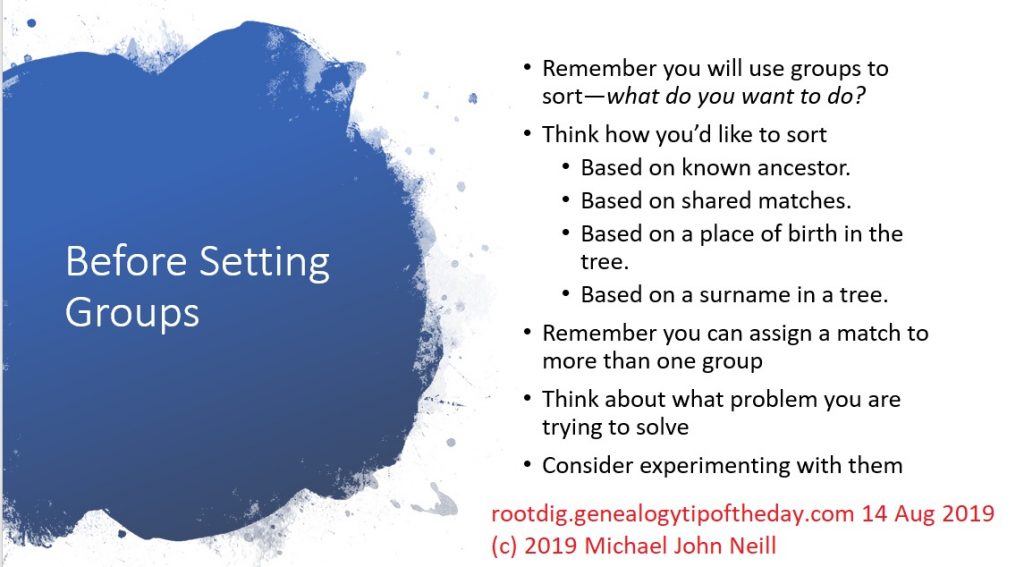I’ve been experimenting with the groups feature at AncestryDNA. Like many analytical techniques, practice and experimentation are a great way to get started. It’s also helpful to think and ask yourself:
what do I want to do with this?
Many times genealogists are given “bells and whistles” (also known as “bright shiny things”) that we are supposed to be enamored with simply because they are new. The ability to put DNA matches in groups doesn’t fall into this category (at least from my perspective) because there are ways that one can use them effectively. But any tool is best used when one thinks about ways to use the tools–what is it you are trying to figure out with your DNA matches and how can the putting of matches in groups help with that?
Experimenting with the groups is one way to do that. Group names can be changed, groups can be deleted, and specific matches can be removed from groups. My preference is to play with the groups in families where I already know the paper genealogical connections and have a good number of my matches determined. Then I can focus on getting some good organizational and conceptual ideas in my head without having to also focus on figuring out the people.
Practice.

Don’t put matches in groups “just because you can.” Give it some thought first–especially if you are going to put large numbers of matches in individual groups.
Practice is good with genealogical software too. Back when I still gave genealogical software demonstrations, I encouraged attendees to create a practice database and play with data entry, multiple relationships, deleting various things, etc. That’s a great way to learn and if you mess it up so badly that you can’t fix it, the world will not end.
Personally I like to assign people to groups based on shared matches and I view group assignment as temporary–used to solve or work on a specific problem.
But that’s just me.
This was one of the concepts mentioned in my recent August 2019 webinar on AncestryDNA.

No responses yet